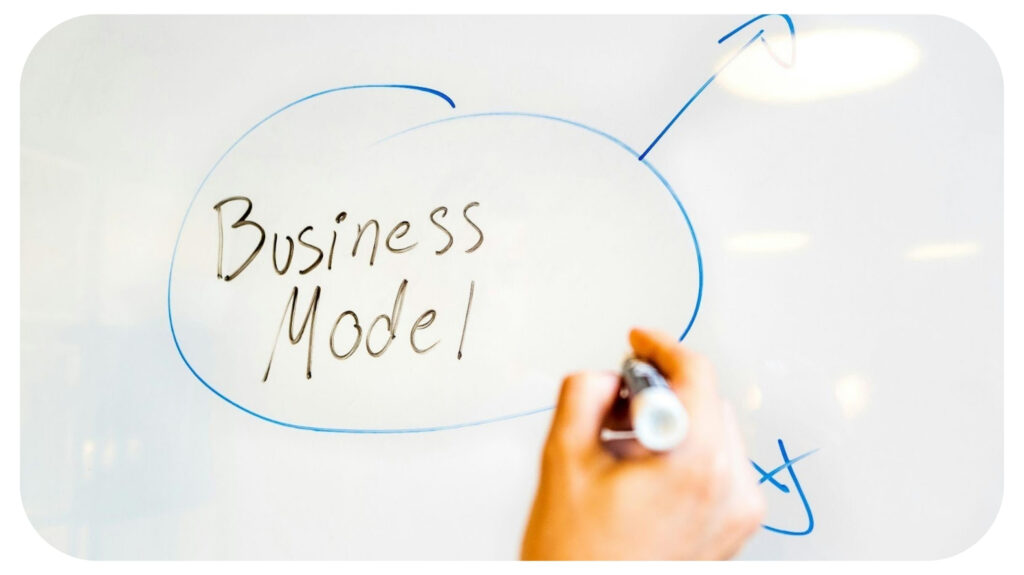Creating a Sustainable Business Model

In today’s fast-paced and increasingly conscious marketplace, creating a sustainable business model has become necessary. Consumers, investors, and employees alike are placing growing importance on how companies operate, not just what they sell. A sustainable business model goes beyond short-term gains to prioritize long-term value, accountability, and resilience.
It requires aligning profitability with responsibility toward people, the planet, and the communities a business serves. This approach can future-proof an organization and also builds a reputation for integrity, innovation, and purpose.
Sustainability, when embedded into a company’s DNA, can drive efficiency, foster loyalty, and open doors to new opportunities. It challenges traditional business norms by integrating ethical sourcing, eco-friendly practices, and social impact into everyday operations. In doing so, companies set new benchmarks for industry leadership.
A well-designed sustainable business model is both a shield and a catalyst. It helps organizations weather economic volatility, adapt to regulatory shifts, and meet evolving stakeholder expectations. But perhaps most importantly, it ensures that growth doesn’t come at the expense of future generations. In a world where change is constant, sustainability offers stability—and a roadmap for lasting success.
What Makes a Business Model Sustainable?
A truly sustainable business model does more than generate profit. It integrates ethical practices, environmental stewardship, and strong community relationships. This approach ensures the business can operate responsibly without depleting resources or harming stakeholders. Businesses that embrace this model often see stronger loyalty, better brand reputation, and a more stable foundation for growth.
The key is operating in a way that meets today’s needs without compromising the future. That means designing systems where growth doesn’t come at the expense of people or the planet. Whether it’s reducing waste, using renewable energy, or promoting fair wages, sustainability is about creating a cycle that benefits everyone involved.
Setting Clear Goals and Defining Priorities
Every successful business begins with clearly defined goals, and sustainability efforts are no different. Entrepreneurs and leaders need to identify what they want to achieve and how their values align with their operations. Unlike traditional goals that focus solely on profit, sustainable models balance financial, social, and ecological outcomes.
A business selling products might prioritize sourcing materials ethically and reducing carbon emissions in its supply chain. A service-focused company might aim to foster work-life balance for employees while supporting community programs. Objectives must be measurable; otherwise, it’s impossible to track progress or make thoughtful adjustments.
Integrating Sustainability into Daily Operations
Sustainability succeeds when it becomes part of the company’s culture and daily processes. This requires every team member, from leadership to entry-level employees, to understand and embrace their role in these efforts. It’s not enough to talk about sustainability during quarterly meetings or feature it in marketing materials; actions must reflect the commitment.
Operational changes might include reducing energy consumption, minimizing waste, or rethinking packaging materials. Digital tools can also streamline processes and lower a company’s environmental footprint. For example, using software to optimize delivery routes can reduce fuel usage, while virtual meetings can cut the need for unnecessary travel.
Transparency is another essential element. Customers and clients value businesses that openly share their efforts and challenges. Being accountable ensures credibility and builds trust. Regardless of the industry, embedding sustainability into daily activities creates consistency that leads to meaningful results.
Building Resilience Through Efficiency
Sustainable business models often emphasize efficiency, reducing expenses while conserving resources. Efficiency impacts multiple areas, such as energy usage, logistics, and human resources management. By eliminating waste and optimizing processes, companies can operate more effectively and avoid unnecessary costs.
Consider energy efficiency, where simple measures like switching to LED lighting, installing motion sensors, or using energy-efficient appliances can yield significant savings. Similarly, digitizing inventory management can reduce materials while improving accuracy. These steps might seem small, but over time, they create a meaningful impact.
Sustainable businesses tend to be resilient in evolving markets. Shifts in customer expectations, such as demands for eco-friendly products or services, can pose challenges for traditional companies. However, those who adopt sustainability early can adapt quickly, leading to a competitive edge.
The Role of Innovation in Sustainability
Innovation drives sustainability forward, giving businesses tools to solve complex problems. From renewable energy solutions to waste-reduction technologies, companies that embrace new ideas can stay ahead of the curve. Businesses willing to rethink traditional practices often find opportunities where others see obstacles.
One example is the rise of circular economies. Instead of the traditional “take-make-dispose” approach, circular models focus on reusing materials and designing products with longevity. Innovative practices like this conserve resources, reduce waste, and often lower costs for both producers and consumers.
Technology also plays a starring role. Artificial intelligence and automation can identify inefficiencies and improve decision-making. Data analytics provides insights into customer behavior, helping businesses tailor offerings that align with sustainability goals. However, innovation doesn’t always require high-tech solutions; sometimes, simple changes like partnering with local suppliers or creating flexible return policies can achieve just as much.
Engaging Stakeholders for Broader Impact
“No business exists in isolation, and a sustainable model thrives when all stakeholders are engaged,” says Dustin Pillonato, founder of Best Treatment Center and DCP Investment Group. “Employees, investors, customers, and communities play pivotal roles in shaping a company’s direction.”
Businesses that listen to these groups and involve them in decision-making build stronger relationships and foster loyalty. Internally, employees should feel empowered to suggest and implement sustainable ideas. Whether it’s launching a recycling program or proposing energy-saving measures, team collaboration enhances creativity and problem-solving.
Workers involved in these initiatives are more likely to take pride in their roles and remain committed to the company. Externally, communication with customers goes a long way. Today’s consumers prefer brands that align with their values.
Sharing success stories and progress toward sustainability goals fosters transparency and generates trust. Partnerships with non-profits, local businesses, or government organizations can also amplify a company’s impact within its community.
Measuring Success and Adapting Along the Way
No strategy is complete without evaluation. A sustainable business model requires regular assessments to ensure goals align with outcomes. Metrics like energy usage, waste reduction, employee satisfaction, customer loyalty, and financial growth can measure progress. Tracking these metrics allows companies to identify gaps and adjust strategies.
It’s also important to acknowledge that sustainability is an ongoing effort. Trends change, technologies advance, and customers refine their preferences. Businesses should be ready to embrace new approaches or pivot when necessary. Flexibility complements sustainability, keeping companies adaptable and forward-thinking.
Creating a sustainable business model is the right thing to do, but also a smart business move. Companies that operate responsibly position themselves to weather challenges and capitalize on opportunities. By focusing on efficiency, innovation, collaboration, and steady evaluation, businesses can achieve profitability while making a positive impact.
Ultimately, sustainability is less a destination and more a journey that rewards commitment and creativity. Companies that embrace it create an enduring legacy, one that benefits people and the planet while ensuring long-term success.
Recommended For You
Boosting Agricultural Productivity: Lessons from Meg Miller’s Experience
Most Inside
Most Inside offers high-quality recommendations and valuable updates to enhance all aspects of your life, providing premium guidance and enriching experiences.




